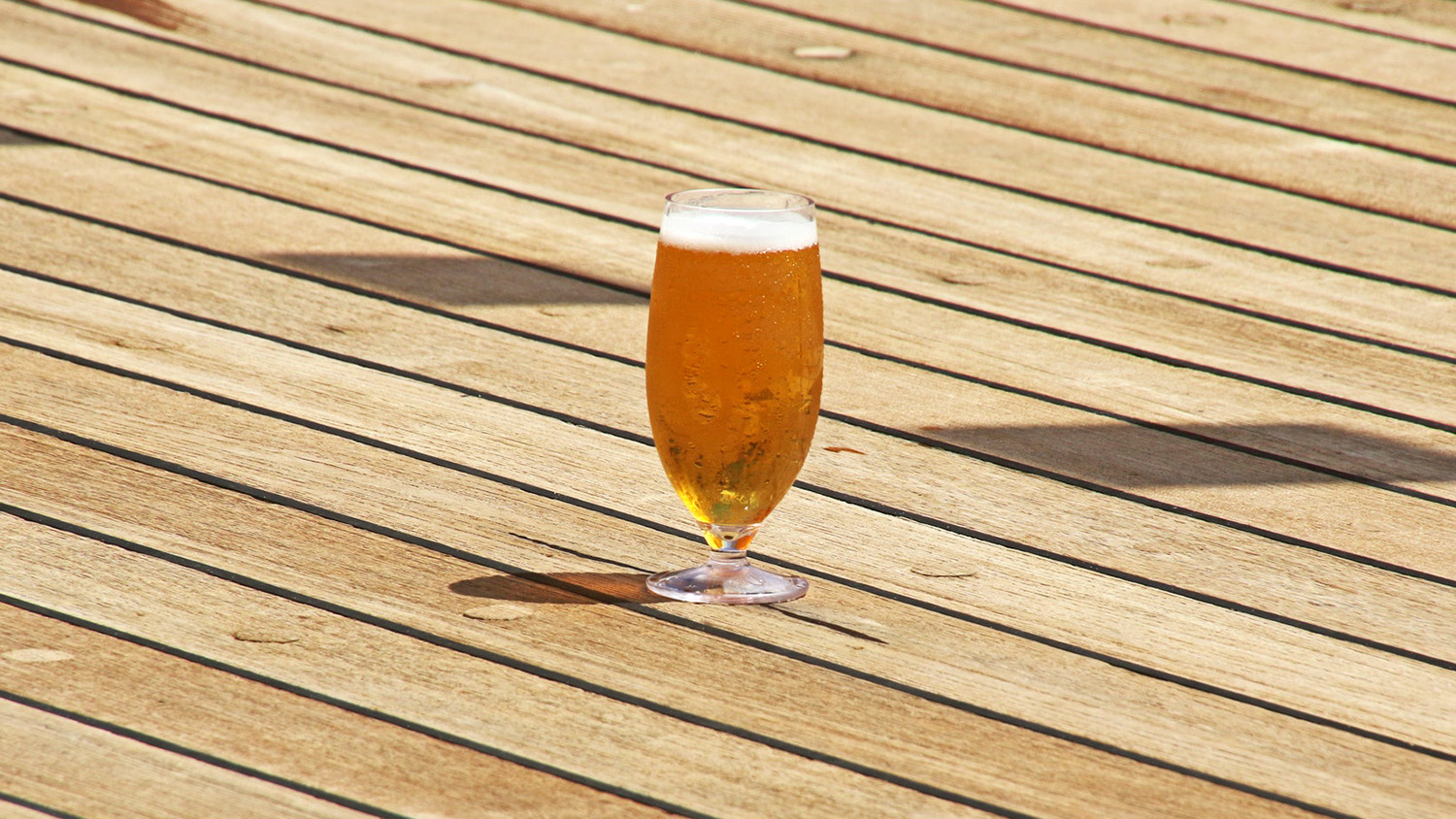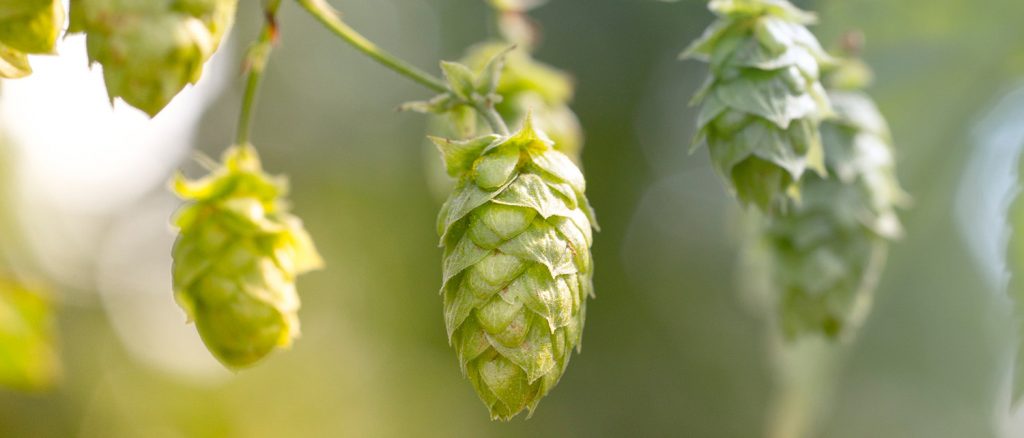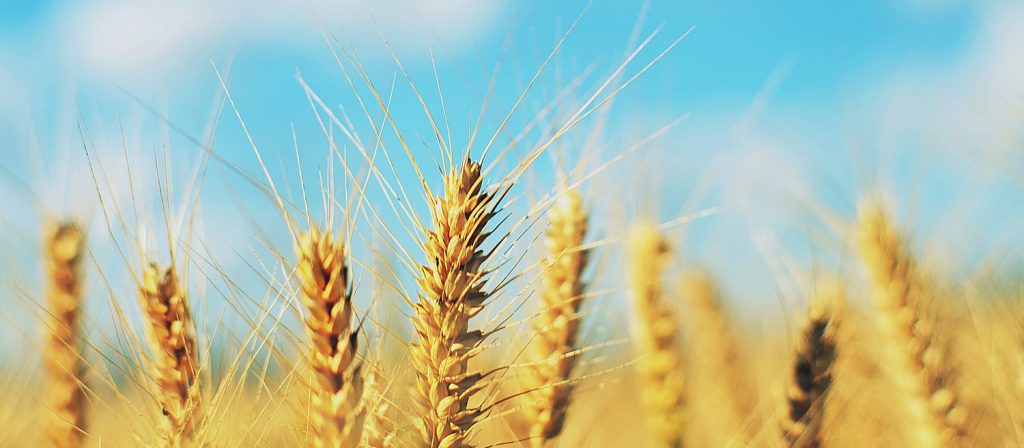Climate Change Will Make Beer Taste Different (Yes, Really)

Editor’s Note: This is a guest post by Colleen Doherty, an associate professor of molecular and structural biochemistry at NC State whose work focuses on the connection between time and stress in plants. This post is part of a series highlighting ways that NC State is helping us understand, mitigate and prepare for the impacts of climate change.
Although centuries old, beer is continually changing. New trends in everything from ingredients to brewing styles alter how a beer tastes. But not all changes are under our control. Beer is almost certainly going to taste different in the future, because the ingredients themselves are changing.
Specifically, beer won’t taste the same due to the effects of changing global temperatures on hops and other components of beer.
Climate and Cost
A 2018 report in Nature pointed out that beer prices may rise due to climate change. Increasing temperatures and more frequent droughts will drive up the costs of beer ingredients such as hops and barley. However, the impacts they identified are just the foam on the surface – the taste of beer will change too. That’s because changes in temperature and rainfall affect the biochemistry of beer ingredients like hops – and that makes them taste different.
But rising temperatures aren’t the only problem. My research focuses on the fact that the timing of our current temperature increase is different than anything we’ve seen since agriculture started thousands of years ago. These changes in daily and seasonal temperature patterns – warmer nights, earlier springs – disrupt how plants function, hurts yields, affects the cost of the ingredients, and affect how beer tastes.
Taste and Terroir
A beer’s flavor comes from the different plants and yeast that go into making the beer: the chemical compounds in the barley (or other grains used) and hop cones; the starch from the grains; the yeast that turns sugar into alcohol. But, if we’re being honest, most of the flavor comes from the hops added to the beer.
Alpha acids from hops provide the bitterness we associate with many beers, while essential oils from hops give a brew its ‘hoppiness’ or flavor. These essential oils are compounds the plant produces, and breeders have cultivated different types of hops for many years to provide a range of flavor profiles.

We are not 100% sure why hop plants originally produced these compounds. Based on other plant research, many scientists speculate that they are involved in defending the plant from bacterial and fungal pathogens. The essential oils are composed of many different chemicals, but some are more prominent than others when it comes to flavor. Myrcene is one of these compounds, and has the green, ‘fresh hop’ smell that many people associate with hops. Other components of the essential oils can give off a variety of woody, citrusy, or fruity flavors, to name just a few.
Each hop variety produces a unique flavor profile. These flavors depend on the combination of different chemicals in the hop cone’s essential oils. For example, if a hop cone produces more linalool or geraniol, it will have a flowery taste. In contrast, the presence of farnesene produces a woody, herbal aroma. The genetics of the plant contribute to this profile. If the hop variety has the genes present that enable it to create a compound like farnesene, it has the ‘genetic potential’ to make a woody flavor. The final flavor profile depends on the combination of compounds the plant produces in the cone at the time of harvest.
But genes are only one factor in determining that flavor profile; the environment the plant grows in also makes a difference. Terroir, a well-known term in wine-making circles, is the contribution the local environment has on a plant’s flavor profile. Terroir is the result of the soil, climate, weather patterns, even insect attacks that the plant has experienced before producing the edible product. Just as the environment’s effect on wine grapes affects the taste of the resulting bottle of wine, the environment hops grow in can affect the taste of the beer in your glass. The full effects of terroir on hops are unknown, but temperature appears to be a significant factor.
And hops are not the only beer ingredients influenced by where they are grown. Terroir also affects the starch component of beer: barley, oats, wheat, or rice. For these ingredients, the ratio of starches to proteins to lipids is essential. For example, barley varieties with high protein content in their seeds are less desirable for beer production. But even grain varieties that are optimal for beer production have altered protein and starch ratios when they are grown under stress conditions such as heat and drought. In other words, these stresses change the quality of the malt extract.
Hotter Nights
Changing temperatures impact how much hop, barley, and wheat we can grow. Temperature also affects the flavor profile of these ingredients. Therefore a change in temperature can alter both the cost and tastes of the final beer product. But the effects of heat are complicated. It isn’t just how much the temperature changes, but when that change happens. A warmer day can severely damage a young, tender plant or a plant at the reproductive stage when the heat-sensitive flower tissues are developing. However, the same temperature increase may have little impact on the same plant during a different stage of its development. Just as the plant moves through different developmental stages throughout the year, plants also move through different activity stages throughout the day. Some processes, such as flower development, are heat-sensitive. So, in many plants, these processes occur during the nighttime hours to protect them from the heat of the day. However, one majorly scary aspect of climate change, at least from the beer production perspective, is that nights are warming faster than days. (This is actually scary for lots of crops).

Suffering through a warm summer day in North Carolina, you can predict that the night will be cooler than the day, but not too cold. Likewise, in winter, even though it’s cold outside, there’s a good chance it will be even colder at night. The difference between the day and night temperature difference is relatively consistent all year round here in North Carolina. There’s always a few exceptions where a cold front moves through, and the night will be warmer than the day, but these are rare, happening no more than a few times per year. However, this consistent degree-difference between day and night is shrinking, mostly because nights are getting warmer.
Nights are warming faster than days due to something called the “boundary layer effect,” which basically means that subtle changes in daytime temperature are amplified at night. One effect of this, for example, is that the number of nights where the temperature dips below freezing (32°F) has decreased over the last 50 years. And warmer nights also affect the compounds produced by hops.
Plants Do Things at the Right Time
Why does nighttime temperature affect the taste of plant products? Although plants don’t move around, they are incredibly attuned to when environmental changes happen. Plants get all the energy they need by just sitting still and collecting it. But this stationary lifestyle means they need to respond rapidly to environmental changes, since they can’t move away from them. One way plants fight environmental stresses is by essentially scheduling around them.
Many environmental stresses happen in a recurring pattern at a specific time of day. For example, I know traffic is going to be terrible going out of Raleigh at 5 PM on a Friday, so I can reduce my stress by leaving town at another time. Similarly, plants can coordinate the timing of their internal activities to avoid recurring stresses in the environment.
Keeping Time
I can use my watch to know when I need to leave to avoid traffic. But how do plants keep track of time? Like animals, plants have an internal circadian clock that controls their biological activities relative to the time of day and the season of the year. For example, before the first rays of sunlight hit a plant, the plant has already begun the processes necessary for photosynthesis – it will have its system ready to go by the time the sun is up.
This circadian clock also controls when plants respond to other repetitive environmental changes. For example, if a particular pest is only active during the day, the plant can fight that attacker off in the daytime, then save its resources by letting its guard down at night. We know timing is essential for these defense responses.
What does this have to do with the taste of beer in North Carolina? Plants fight bacteria, fungi, or bugs by producing chemical compounds. Interestingly, these compounds are what we associate with flavor. Many of the compounds that give hop plants their distinctive tastes are also defense compounds. Derivatives of Myrcene and Humulene, which give that ‘hoppy smell’ are antibacterial and antimicrobial compounds. The distinctive hoppy smell of beers comes from the byproduct chemicals that are released as these compounds break down in the brewing process.

The internal circadian clock also allows plants to coordinate their biological processes with recurring weather patterns, such as daily temperature cycles. The circadian clock can control what time of day and season different events, like flower development, occur. For example, the circadian clock controls the timing of heat-sensitive processes, restricting them to the coldest time of day, which is generally at night. A small temperature increase during this period is particularly damaging since the most heat-sensitive activities are consolidated to this period that the plant expects to be the coldest part of the day. These changes to timing are why, for plants, at least, the effects of climate change are a bigger problem than many people realize.
Use Temperature to Set Your Clock
You know that temperature difference we talked about, with nights being cooler than days? Plants use that temperature difference to set their circadian clocks. The circadian clock in any species must be adaptable to the environment, so that it can adjust to things like seasonal changes in daylight.
We know plants respond to changes in daily light (much like humans do), but we know very little about how plants use the difference between warm days and cool nights to set their clock. However, we do know that some plants are sensitive to small changes in the daily temperature range.
In other words, warmer nights mean that the temperature difference between night and day is shrinking. And that can cause an effect in plants similar to jet-lag – they find it harder to set their circadian clock. In consequence, their clock may be less sensitive to changing conditions and can become out of sync with the environment.
What Does NC State Have to Do With Warmer Nighttime Temperatures and the Taste of Beer?
We are working to understand the effects of warmer nights on the chemicals that plants produce.
While nights are getting warmer, we still don’t know the full impact warmer nights will have on crops – including hops. In collaboration with Xu Li at NC State’s Plants for Human Health Institute, my lab is examining the effects of warmer nighttime temperatures on the compounds hop plants produce. Many of these compounds are antioxidants, antimicrobials, or other health-promoting nutraceuticals. Understanding how warmer nights affect the plant’s ability to allocate resources to making these compounds informs us how hop flavors will change. Importantly, these investigations also provide information on how these classes of compounds will be affected in other crops we rely on for food, as well as plant-derived medicines.
We are also researching how warmer nights affect different parts of the plant. Hops are a unique crop in that many parts of the plant are edible. The tender new shoots are a delicacy known as Poor Man’s Asparagus. (This is a total misnomer since hop shoots are among the most expensive vegetables to buy in Europe.) The hop leaves are edible, can be used to make delicious pasta, and contain many of the health-promoting compounds found in the hop cones. Even the cones themselves can be used for cooking, making tea, and contain health-promoting compounds. Identifying how warmer nights affect different plant tissues provides clues we can use to advance our understanding of how warmer nighttime temperatures disrupt the plant’s underlying biochemistry. This knowledge will be used to help us understand the effects on other crops.
Warmer Nights and Pathogens
Warmer nights also affect the behavior of pest species, which can have a significant impact on plants. Specifically, higher nighttime temperatures give pests more time to be active and increase the prevalence of diseases. For example, if the nights aren’t cooling off, fungal and bacterial pests get extra time to grow and attack plants.
In collaboration with fellow researchers Michael Kudenov in Engineering and Dahlia Nielsen in Bioinformatics, my lab is examining not just how the plants are impacted by warmer nights, but also how the interaction between plants and pathogens is affected. We’re also looking at how these changes in the balance between pests and plants affect the defense compounds the plant produces.
And changes in these defense compounds affect more than just the taste of beer. These antibacterial, antifungal, and antiviral components provide alternative sources of antibiotics and antimicrobials. For example, adding hop extracts to chicken feed may help reduce diseases in chickens.
How warmer nights and altered pest activity change the chemical composition of hops will help us understand the effects in other crops: the vitamins in our vegetables, the nutraceutical compounds in medicinal plants, and the overall nutritional quality of everything we grow.
This post was originally published in NC State News.